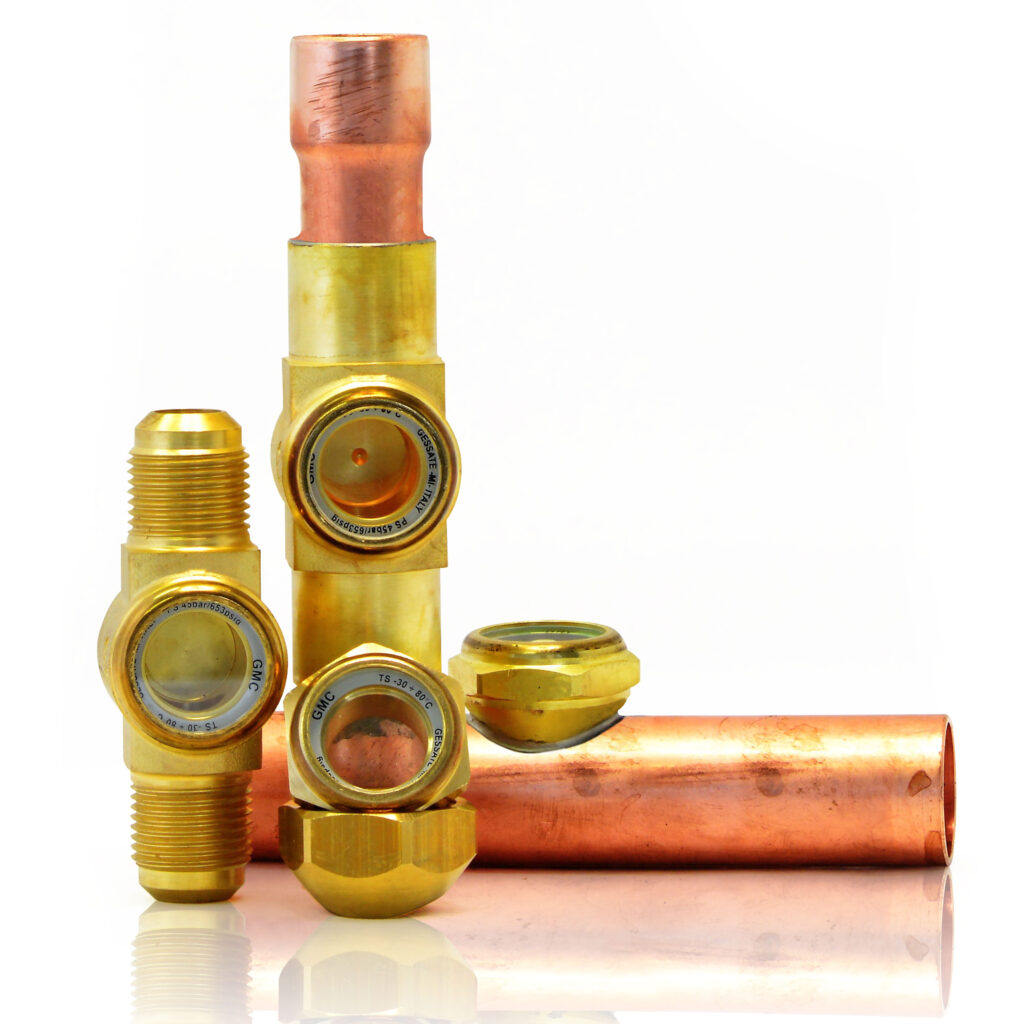
The indicators are classified as “Pressure accessories” in the sense of the PED Directive 2014/68/EU, Article 2, paragraph 5 and are subject of Article 4, paragraph 1, letter (c), of the same Directive. All the product range is suitable for use with fluids proper to the Group 2, as defined in Article 13, paragraph 1, letter(b), of PED Directive 2014/68/EU, therefore not toxic, not inflammable and not explosive fluids; to this macro Group belongs also the refrigerant fluids listed and classified in A1 Group of Annex E of standard EN 378-1. Saddle type indicators are excluded from the scope of Directive 2014/68/EU as piping components. Examples of refrigerant fluids are:
– HFC R134a, R404A, R407C, R410A, R50;
– Blends HFC/HFO R448A, R449A, R450A, R452A, R513A.
The function of liquid and moisture indicators is to verify the actual situation of flow and the presence of moisture in the system.
The indicators are made by embedding a spyglass directly into the body of hot forged brass EN 12420 – CW617N or in the annular indicator body of brass EN 12164 – CW614N. This forms a unique compact structure that minimizes the junctions between components, followed by removing possible leakage of refrigerant. To obtain a perfect sealing of glass in all indicators is used a modified Teflon gasket, in saddle type indicators the seal between the annular indicator and the body is done by an O-ring made of CR. In some models, the solder connections are made of copper EN 12735-1 – Cu-DHP. This indicators series allows checking if the fluid passes in the indicator in the completely liquid state in charging conditions or in normal system operation. The presence of bubbles indicates the partial evaporation of the fluid along the liquid line.
The brazing of the indicators to the system shall be done with a low melting point alloy. During this process do not point the flame directly towards the body keeping it cooled in order to avoid compromising the seal of the gaskets.
NOTE: Where it is necessary to tighten the ring nut (equipped with a seal) to the body indicator, use the torque specified in the instructions provided with the product in order to ensure a perfect seal and resistance to PS maximum allowable declared.